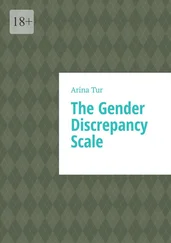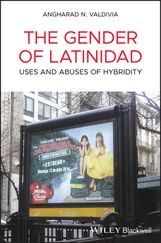See also apples
Peta, Jayme
“phase,” gender exploration described as, ref. 2
Pickert, Nils
pink boys
Pitt, Brad
possibility, ref. 2
Priuses, gender
pronouns, gender-neutral (n3)
protection, acceptance as form of
protogay children, ref. 2
prototransgender youth
psychiatric conditions, comorbid
psychiatric gender fixers, doctors as
psychiatrists, referral to
puberty, delayed, ref. 2
puberty blockers
bone mineral density and
brain development and
cross-sex hormones/hormone replacement therapy and
Ingraham, Laura, on
as medical intervention
psychological aspects, ref. 2, ref. 3, ref. 4
readiness for
surgeries and
use of
radical feminism
radio, ref. 2
Raising My Rainbow (Duron)
Rankin, Susan, ref. 2
regrets, ref. 2
reparative therapy, ref. 2, ref. 3
research studies versus experience
risk, ref. 2
Rosenthal, Stephen, ref. 2
Rudacille, Deborah
Russell, Hershel
Ryan, Caitlin, ref. 2
safety versus thriving
sameness/likeness as bonding agent
San Francisco Arts and Lectures series
San Francisco Chronicle
schools
bathrooms, gender-neutral, ref. 2
gender-expansive practices in
Gender Spectrum and
lining up in
Schools in Transition: A Guide for Supporting Transgender Students in K Schools
screens
documentaries
films
Internet and social media
radio, ref. 2
as social mirrors
television, ref. 2, ref. 3
scripting
self-labels
sensory issue, autism spectrum disorder as
sexual abuse
siblings
Singer, Isaac Bashevis
“Sissy Boy Syndrome” and the Development of Homosexuality, The (Green)
“Sisterhood Is Complicated”
slow-to-warm-up children (temperament type), ref. 2
smoothies, gender, ref. 2
snowballs, families as
social action. See streets (social action)
social constructivists, ref. 2
social cues, inability to read
social media. See Internet and social media
social mirrors, screens as
social opportunity, gender as
social transition
Solomon, Andrew, ref. 2, ref. 3
solution, gender as
Spiegel, Alix
Spoiling Childhood (Ehrensaft), ref. 2, ref. 3
Stocker, David
Stoller, Robert
streets (social action)
advances
American Psychological Association
bathrooms, gender-neutral
minorities
snowballs, families as
Transgender Law Center
written words
Stuart Little (White), ref. 2
support, parental
support networks
Supreme Court (India)
surgeries
symptom, gender as, ref. 2
television, ref. 2, ref. 3
temperament
about
behavior categories reflecting
easy children, ref. 2
as “how” of behavior
slow-to-warm-up children, ref. 2
Teslas, gender
Testa, Rylan
testosterone
See also cross-sex hormones/hormone replacement therapy
“they,” as gender-neutral pronoun (n3)
thinking outside of boxes
Thomas, Alexander
Three to Infinity (film)
thriving versus safety
time, as gender web dimension
Tootsie Roll Pops, gender
“trans,” as term
transactionalists, ref. 2
transgender children, defined
See also apples; specific topics
Transgender Law Center
translators, mental health professionals as
trauma
treatment, gender as, ref. 2, ref. 3
true gender self
Truth, Sojourner
T: The New York Times Style Magazine
Tuerk, Catherine
“Two Families Grapple with Sons’ Gender Preferences” (radio program), ref. 2
University of California, Los Angeles
University of California, San Francisco, Benioff Children’s Hospital Child and Adolescent Gender Center Clinic, ref. 2, ref. 3, ref. 4, ref. 5
Venice, Italy
Vilain, Eric
Waldron, Candace, ref. 2
Wallace, Robert
“watchful waiting” model, ref. 2
Wellesley College
“What Is a Woman?” (Goldberg)
“What Should You Do If Your Son Says He’s a Girl?” (Vilain and Bailey)
White, E. B.
Winnicott, D. W.
Witterick, Kathy, ref. 2
World Professional Association for Transgender Health (WPATH), ref. 2
written words, for social action
“Yentl the Yeshiva Boy” (Singer)
“Your Majesty, the Baby” sensibility
Zucker, Ken, ref. 2, ref. 3, ref. 4, ref. 5, ref. 6
DIANE EHRENSAFT, PHD,is a developmental and clinical psychologist who for over thirty years has worked with gender-nonconforming children and their families. Dr. Ehrensaft is the author of numerous books and articles on child development, gender, and parenting. Her previous books include Gender Born, Gender Made ; Parenting Together ; Spoiling Childhood ; Mommies, Daddies, Donors, Surrogates ; and Building a Home Within (with Toni Vaughn Heineman). Dr. Ehrensaft is an associate professor of pediatrics at the University of California, San Francisco, and the attending psychologist at the UCSF Benioff Children’s Hospital Child and Adolescent Gender Center Clinic. She is a founding member of the Child and Adolescent Gender Center and serves as its director of mental health. She speaks in the United States and abroad on the subject of gender-nonconforming children at both community and professional conferences and is cited frequently in the media. She has appeared in The New York Times and many other media outlets and was featured in National Public Radio’s landmark 2008 two-part series on gender-nonconforming children. Dr. Ehrensaft is a founding member of A Home Within, a national project focused on the emotional needs of children and youth in foster care, and holds leadership positions with Gender Spectrum, a national organization offering education, training, and advocacy services to promote gender acceptance. She is a mother, a grandmother, and a proud member of PFLAG. Dr. Ehrensaft lives and practices in Oakland, California.
dianeehrensaft.com
Thank you for purchasing this ebook.
Join our email list to learn about new releases, ebook deals, bonus content and more from The Experiment.
Join
[ eepurl.com/ApHK5]
You can also connect with us on:
Facebook
/experimentbooks
Twitter
@experimentbooks
Pinterest
/theexperiment

PRAISE FOR
The Gender Creative Child
“ The Gender Creative Child is an invaluable resource for families and practitioners wanting to understand the complexity and beauty of gender development and the value of affirmative care. I’m struck that Dr. Ehrensaft’s most revolutionary idea is also her most straightforward—if we really learn how to listen to our children, they will tell us what they need.”
—Aron Janssen, MD, director and founder of the Gender and Sexuality Service, NYU Langone Medical Center
“Dr. Ehrensaft has achieved the impossible: an easy-to-read, but hard-to-forget, handbook that speaks to parents, teachers, medical doctors, counselors, and policymakers alike. In an accessible and conversational manner, Ehrensaft tackles tough challenges such as how to help gender creative children who also struggle with autism; why some youth intentionally choose the middle of the gender spectrum instead of the binary; how to navigate the legal and financial barriers to cross-sex hormone treatments; and why we must analyze traditional gender-based research studies with a critical eye and the wisdom of experience. This book urges us to abandon the fantasy that gender is a simple either/or proposition, and embrace the reality that there are infinite manifestations of a person’s identity. If we allow children to blaze the trail, however, then their path to self-actualization becomes clearer. A must-have for any professional who works with youth.”
Читать дальше













